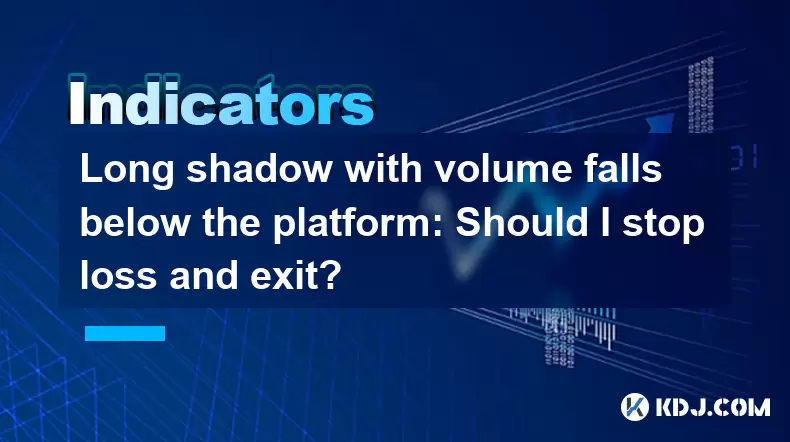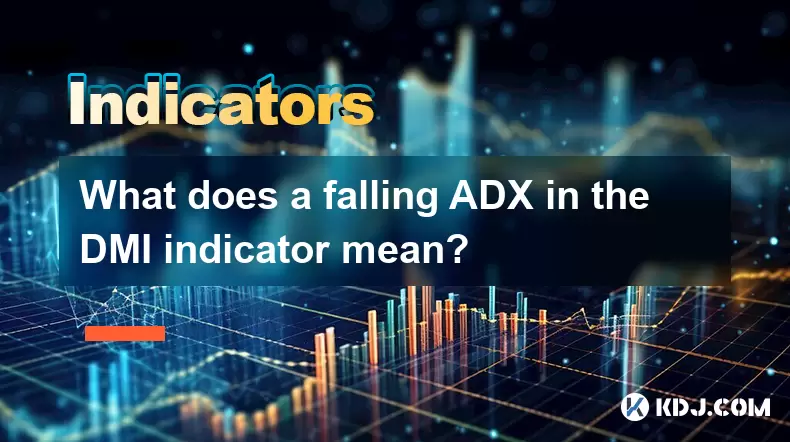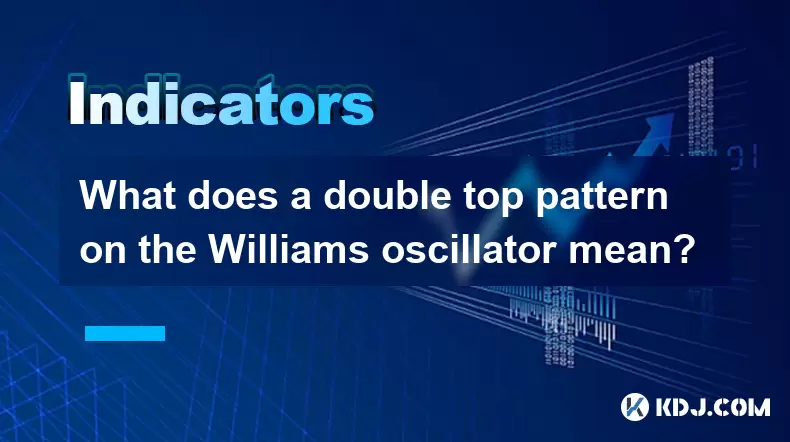-
 Bitcoin
Bitcoin $116700
0.24% -
 Ethereum
Ethereum $3973
4.34% -
 XRP
XRP $3.283
7.68% -
 Tether USDt
Tether USDt $1.000
0.01% -
 BNB
BNB $789.8
2.27% -
 Solana
Solana $176.2
3.31% -
 USDC
USDC $0.9999
0.00% -
 Dogecoin
Dogecoin $0.2238
5.14% -
 TRON
TRON $0.3389
-0.51% -
 Cardano
Cardano $0.7907
4.03% -
 Stellar
Stellar $0.4527
10.02% -
 Hyperliquid
Hyperliquid $41.07
4.27% -
 Sui
Sui $3.794
1.77% -
 Chainlink
Chainlink $19.49
10.40% -
 Bitcoin Cash
Bitcoin Cash $580.9
0.74% -
 Hedera
Hedera $0.2617
4.32% -
 Avalanche
Avalanche $23.41
3.67% -
 Ethena USDe
Ethena USDe $1.001
-0.03% -
 Litecoin
Litecoin $122.4
1.38% -
 Toncoin
Toncoin $3.364
1.49% -
 UNUS SED LEO
UNUS SED LEO $8.988
0.37% -
 Shiba Inu
Shiba Inu $0.00001295
2.82% -
 Uniswap
Uniswap $10.62
5.75% -
 Polkadot
Polkadot $3.922
4.46% -
 Dai
Dai $1.000
0.01% -
 Bitget Token
Bitget Token $4.494
2.15% -
 Monero
Monero $268.0
-1.30% -
 Cronos
Cronos $0.1523
3.68% -
 Pepe
Pepe $0.00001127
4.43% -
 Aave
Aave $285.4
4.85%
Long shadow with volume falls below the platform: Should I stop loss and exit?
A long shadow with high volume below a platform on a crypto chart may signal a reversal; traders should assess risk and market context before deciding to stop loss and exit.
Jun 01, 2025 at 12:35 pm

When analyzing a cryptocurrency chart, a long shadow with volume falling below the platform can be a significant indicator for traders. This pattern often suggests a potential reversal or a strong rejection of lower prices, which might lead to a decision on whether to stop loss and exit the position. Let's delve into understanding this pattern and the considerations for making an informed decision.
Understanding the Long Shadow with Volume
A long shadow on a candlestick chart represents the price range between the high and low of the trading period, extending beyond the body of the candle. When this shadow is accompanied by high trading volume, it indicates strong market interest and potential shifts in sentiment. If this long shadow falls below a significant support level or platform, it suggests that the market tested lower prices but ultimately rejected them, pushing the price back up.
Analyzing the Platform
The platform in question is typically a horizontal level where the price has found support or resistance in the past. When the long shadow falls below this platform, it indicates that the price briefly broke through the support level but was unable to sustain that break. This could be a sign of a false breakout, which often leads to a reversal in the price direction.
Volume and Its Importance
Volume is a critical factor in confirming the validity of a price movement. High volume accompanying the long shadow below the platform suggests that many traders participated in the price action. This high volume can indicate strong buying pressure at the lower levels, reinforcing the potential for a price reversal.
Decision to Stop Loss and Exit
When faced with a long shadow and high volume falling below the platform, traders need to consider several factors before deciding to stop loss and exit their position.
- Risk Tolerance: Evaluate your risk tolerance and the potential impact of holding the position versus exiting. If the price movement below the platform is significant and your risk tolerance is low, stopping loss might be the safer option.
- Market Context: Consider the broader market context, including overall trends and news that might affect the cryptocurrency's price. If the market is bearish and other indicators suggest further declines, it might be prudent to exit.
- Technical Indicators: Use other technical indicators, such as moving averages, RSI, and MACD, to confirm the potential reversal or continuation of the trend. If these indicators align with the long shadow and volume, it can provide additional confidence in your decision.
- Position Size and Profit/Loss: Assess your position size and current profit or loss. If you are in a profitable position, you might want to secure your gains. Conversely, if you are in a loss, consider whether the potential for a reversal justifies holding the position.
Implementing a Stop Loss
If you decide to stop loss and exit your position, it's crucial to implement this strategy correctly. Here's a step-by-step guide on how to do so:
- Determine Your Stop Loss Level: Based on your analysis, set a stop loss level that aligns with your risk management strategy. This could be just below the platform where the long shadow occurred.
- Place the Stop Loss Order: Use your trading platform to place a stop loss order at the predetermined level. This order will automatically execute if the price reaches that level, limiting your potential loss.
- Monitor the Market: Even after placing a stop loss order, continue to monitor the market for any significant changes that might affect your position.
- Review and Adjust: After the trade is closed, review your decision and the outcome. Adjust your strategy based on what you learn to improve future trades.
Case Studies of Long Shadows and Volume
To illustrate the impact of a long shadow with volume falling below a platform, let's look at a couple of hypothetical case studies.
Case Study 1: Bitcoin (BTC)
In this scenario, Bitcoin's price forms a long shadow with significant volume just below a key support level at $30,000. The price briefly drops to $29,500 but quickly rebounds to close above $30,000. Traders who recognize this pattern might decide to hold their positions, anticipating a potential reversal. If the price subsequently rises, those who held their positions could benefit from the upward movement.
Case Study 2: Ethereum (ETH)
In another example, Ethereum's price drops below a platform at $2,000, forming a long shadow with high volume. However, the price fails to sustain below $2,000 and closes above it. Traders who stop loss and exit at this point might avoid further losses if the price continues to decline. Conversely, those who hold might see a recovery if the price rebounds.
Psychological Factors in Trading
Trading decisions are not solely based on technical analysis; psychological factors also play a significant role. Fear and greed can influence whether traders choose to stop loss and exit or hold their positions. Understanding your emotional response to market movements is crucial for making rational decisions.
- Fear of Loss: The fear of losing money can prompt traders to exit positions prematurely, even when technical indicators suggest a potential reversal.
- Greed for Gains: Conversely, the desire for higher profits might lead traders to hold onto losing positions, hoping for a turnaround that may not materialize.
Balancing these emotions with a disciplined approach to trading can help you make more informed decisions when faced with a long shadow and high volume falling below a platform.
Frequently Asked Questions
Q: How can I differentiate between a false breakout and a genuine one when a long shadow falls below the platform?
A: To differentiate between a false breakout and a genuine one, look for confirmation from other technical indicators such as volume, moving averages, and oscillators like the RSI. A false breakout often has a quick reversal with high volume, while a genuine breakout will show sustained price movement beyond the platform with consistent volume.
Q: What other patterns should I be aware of that might accompany a long shadow with volume falling below the platform?
A: Other patterns to watch for include doji candles, which indicate indecision in the market, and bullish or bearish engulfing patterns, which can signal potential reversals. Additionally, a hammer or shooting star pattern near the platform can provide further confirmation of a potential reversal.
Q: How does the time frame of the chart affect the decision to stop loss and exit when a long shadow with volume falls below the platform?
A: The time frame of the chart can significantly impact your decision. On shorter time frames, such as 1-hour or 4-hour charts, the long shadow and volume might indicate a short-term reversal, prompting a quicker stop loss. On longer time frames, like daily or weekly charts, the pattern might suggest a more significant trend change, allowing for a more patient approach to holding the position.
Q: Can the presence of news or events influence the decision to stop loss and exit when a long shadow with volume falls below the platform?
A: Yes, news and events can greatly influence market sentiment and price movements. If there are significant news events that could impact the cryptocurrency, such as regulatory changes or major partnerships, these should be considered when deciding whether to stop loss and exit. If the news is bearish and aligns with the long shadow and volume, it might reinforce the decision to exit the position.
Disclaimer:info@kdj.com
The information provided is not trading advice. kdj.com does not assume any responsibility for any investments made based on the information provided in this article. Cryptocurrencies are highly volatile and it is highly recommended that you invest with caution after thorough research!
If you believe that the content used on this website infringes your copyright, please contact us immediately (info@kdj.com) and we will delete it promptly.
- Roman Storm, Funding Effort, and the Looming Defense Retrial: A New York Minute on the Tornado Cash Case
- 2025-08-09 02:50:14
- Crypto's Wild Ride: XRP, Dogecoin, and the Altcoin Surge You Can't Ignore
- 2025-08-09 02:50:14
- Elon Musk, Bitcoin, and the Enduring Power of Approval: A Crypto Love Story?
- 2025-08-09 03:50:15
- Ruvi AI: The Next Big Thing After Ripple on CoinMarketCap?
- 2025-08-09 03:50:15
- Floki Price Surges: Elliott Wave and Fibonacci Setups Point to Potential Gains!
- 2025-08-09 02:30:16
- Pepe Price, RTX (Remittix?) & the $10K ETH Dream: NYC Crypto Chatter
- 2025-08-09 02:30:16
Related knowledge

What does it mean when the TRIX indicator suddenly diverges downward after a long period of convergence?
Aug 09,2025 at 12:56am
Understanding the TRIX Indicator in Cryptocurrency TradingThe TRIX indicator, or Triple Exponential Average, is a momentum oscillator used in technica...

Why is the rise limited after a MACD bottoming divergence?
Aug 09,2025 at 12:07am
Understanding MACD Bottoming Divergence in Cryptocurrency TradingThe MACD (Moving Average Convergence Divergence) is a widely used technical indicator...

What does it mean when the OBV continues to rise but the price is trading sideways?
Aug 08,2025 at 10:35pm
Understanding On-Balance Volume (OBV)On-Balance Volume (OBV) is a technical indicator that uses volume flow to predict changes in stock or cryptocurre...

What does a falling ADX in the DMI indicator mean?
Aug 09,2025 at 03:16am
Understanding the ADX and DMI Indicator FrameworkThe DMI (Directional Movement Index) is a technical analysis tool developed by J. Welles Wilder to id...

What does a double top pattern on the Williams oscillator mean?
Aug 09,2025 at 02:36am
Understanding the Williams %R OscillatorThe Williams %R oscillator is a momentum indicator developed by Larry Williams to identify overbought and over...

What is a nonce and how is it used in Proof of Work?
Aug 04,2025 at 11:50pm
Understanding the Concept of a Nonce in CryptographyA nonce is a number used only once in cryptographic communication. The term 'nonce' is derived fro...

What does it mean when the TRIX indicator suddenly diverges downward after a long period of convergence?
Aug 09,2025 at 12:56am
Understanding the TRIX Indicator in Cryptocurrency TradingThe TRIX indicator, or Triple Exponential Average, is a momentum oscillator used in technica...

Why is the rise limited after a MACD bottoming divergence?
Aug 09,2025 at 12:07am
Understanding MACD Bottoming Divergence in Cryptocurrency TradingThe MACD (Moving Average Convergence Divergence) is a widely used technical indicator...

What does it mean when the OBV continues to rise but the price is trading sideways?
Aug 08,2025 at 10:35pm
Understanding On-Balance Volume (OBV)On-Balance Volume (OBV) is a technical indicator that uses volume flow to predict changes in stock or cryptocurre...

What does a falling ADX in the DMI indicator mean?
Aug 09,2025 at 03:16am
Understanding the ADX and DMI Indicator FrameworkThe DMI (Directional Movement Index) is a technical analysis tool developed by J. Welles Wilder to id...

What does a double top pattern on the Williams oscillator mean?
Aug 09,2025 at 02:36am
Understanding the Williams %R OscillatorThe Williams %R oscillator is a momentum indicator developed by Larry Williams to identify overbought and over...

What is a nonce and how is it used in Proof of Work?
Aug 04,2025 at 11:50pm
Understanding the Concept of a Nonce in CryptographyA nonce is a number used only once in cryptographic communication. The term 'nonce' is derived fro...
See all articles

























































































